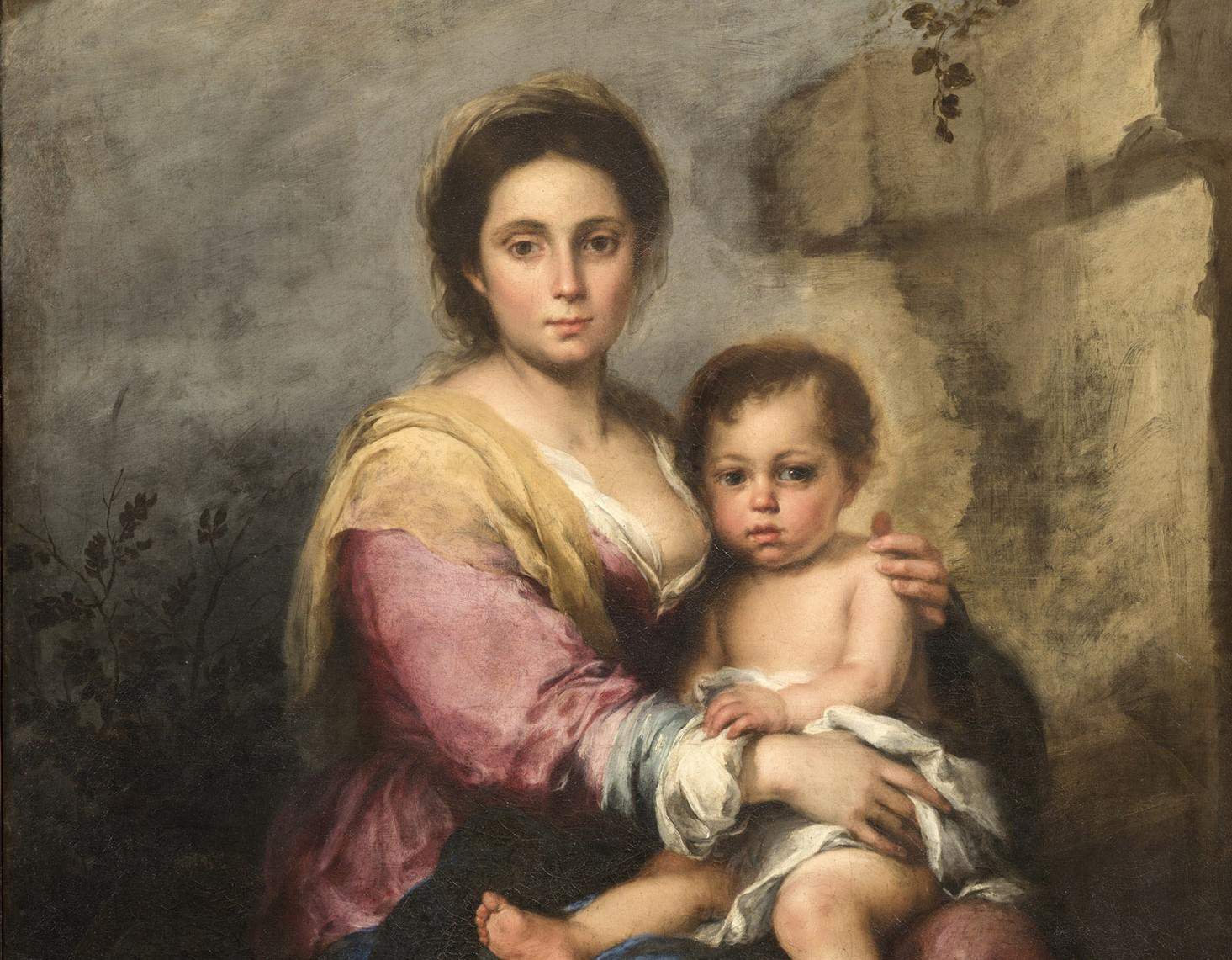The restoration of the Madonna of Milk, a work of about 1675 by Bartolomé Esteban Murillo (Seville, 1618 - Cádiz, 1682), preserved in Rome ’s Palazzo Corsini, has revealed some surprising elements. Restorers from the Gallerie Nazionali d’Arte Antica, after subjecting the canvas to various diagnostic investigations (radiography, IR reflectography, multispectral analysis, X-ray fluorescence) in preparation forcleaning to remove oxidized varnishes and later retouches, have uncovered that beneath the figure of the Virgin is a figure of a Saint Francis at prayer later repainted, showing how Murillo reused, for his Madonna of Milk, a canvas that had already been painted earlier.
“The reuse of canvases,” explained Alessandro Cosma, curator of the galleries and in charge of the intervention, “is nothing new, but here the exceptionality lies in the use of parts belonging to a previous figure reused as the basis for the new painting, such as the folds of the saint’s habit that form the drapery of the Madonna’s leg.” Now technicians are continuing their work to see if the canvas may hold further novelties, which may perhaps even further illuminate the work’s collecting history. All discoveries and new findings will be the subject of a presentation at Palazzo Barberini in April.
The Madonna of the Milk around 1675 in Seville and, reads the card on the museum’s website, “is one of the best examples of Murillo’s ability to render religious subjects in terms of ’familiar narrative’ and compositional simplicity. The Corsini painting is, in fact, built around the two figures of the Virgin and Child, rendered with those almost ’peasant’ features that gave the work its nineteenth-century nickname, concentrating the greatest expressiveness in the faces and gazes. The focal point of the work becomes, therefore, the eyes that stare intensely at the viewer, almost as if he had interrupted the moment of suckling, to which the robes barely pulled down over Mary’s breasts allude, according to a rhetorical strategy that, after the Council of Trent, tended to make this iconographic typology less explicit.” Gustave Flaubert also wrote of the work after seeing it during a stay in Rome in 1851: “I am in love with Murillo’s Virgin in the Corsini Gallery. Her head haunts me and her eyes keep passing in front of me like two dancing lanterns.”
The restoration was initiated last October by the National Galleries of Ancient Art, of which the Corsini Gallery is a part along with Palazzo Barberini, thanks to museum funds and the contribution of proceeds raised through the sale of Vino Civitas, an initiative promoted by the Civita Association in collaboration with Tenuta Caparzo of Montalcino.
Image: Bartolomé Esteban Murillo, Madonna of Milk, detail (c. 1675; oil on canvas, 164 x 108 cm; Rome, Corsini Gallery)
 |
| Rome, restoration of Murillo's Madonna of Milk reveals another painting |
Warning: the translation into English of the original Italian article was created using automatic tools. We undertake to review all articles, but we do not guarantee the total absence of inaccuracies in the translation due to the program. You can find the original by clicking on the ITA button. If you find any mistake,please contact us.